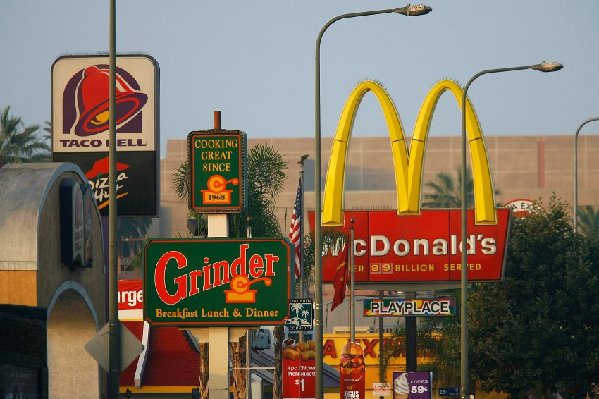當(dāng)前位置: Language Tips> 流行新詞
分享到
昨天說(shuō)到新鮮食品匱乏的地區(qū)叫做“食品荒漠”,實(shí)際與之類似的還有“食物沼澤”。

Food swamp refers to an area that has an abundance of fast food restaurants and other low-nutrition food options.
“食物沼澤”是指快餐店林立和被其他類似的營(yíng)養(yǎng)價(jià)值較低食品充斥的地區(qū)。
乍看之下,“食品荒漠”(food desert)和“食物沼澤”都與食物相關(guān),其實(shí)兩者里提到的食物卻截然不同。“食品荒漠”里的食物是健康食品,即新鮮蔬菜、瓜果、肉類和奶制品,而食物沼澤中出現(xiàn)的食品卻是高熱量、低營(yíng)養(yǎng)的“垃圾食品”。因此,在學(xué)記時(shí)一定要區(qū)分清楚,謹(jǐn)防搞混。
For example:
The authority has mapped the entire city to measure access to healthier food within walking distance, and found many neighbourhoods would qualify as food swamps, with many more less healthy food stores than healthier ones.
當(dāng)局繪制全市地圖來(lái)評(píng)估在步行距離之內(nèi)獲得健康食物的難易程度,發(fā)現(xiàn)有不少社區(qū)可被稱為“食物沼澤”,不健康食品店舖的數(shù)目多于健康食品店。
Food swamps are also found in both high and lower income neighbourhoods throughout the city, and there was no significant correlation between a neighbourhood's income and its chance of healthier food access.
調(diào)查還發(fā)現(xiàn),高收入和低收入地區(qū)同樣都有“食物沼澤”,且居民收入和接觸健康食物的機(jī)會(huì)并無(wú)重大關(guān)聯(lián)。
(中國(guó)日?qǐng)?bào)網(wǎng)英語(yǔ)點(diǎn)津 丁一)
上一篇 : 你“圣誕沖動(dòng)”了嗎?
下一篇 :
分享到
關(guān)注和訂閱


口語(yǔ)
關(guān)于我們 | 聯(lián)系方式 | 招聘信息
電話:8610-84883645
傳真:8610-84883500
Email: languagetips@chinadaily.com.cn